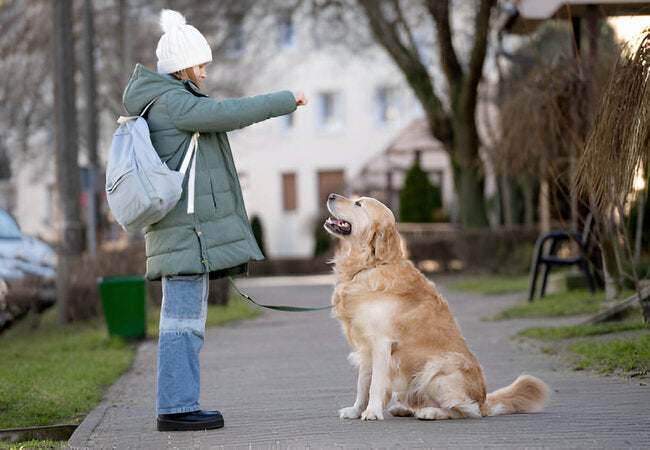How to Teach Your Dog to Sit No Matter Where You Are – Vet‑Approved 2025 Training Guide 🐶🎓

In this article
How to Teach Your Dog to Sit No Matter Where You Are – Vet‑Approved 2025 Training Guide 🐶🎓
By Dr. Duncan Houston BVSc
Teaching “sit” is one of the most important commands for safety, manners, and calm control, especially when you're out and about. In this vet‑approved 2025 guide, I’ll walk you through a robust, stepwise method using proven techniques like luring, capturing, cueing, fading, and proofing. With consistency and patience, your dog will sit reliably, no matter the place, distance, or distraction. Let’s dive in! 🧠🐾
1. 📍 Why “Sit” Matters Everywhere
“Sit” helps in everyday situations—before touching, moving tech, guests entering, crossing streets, and managing other dogs. Reliability means = safer, quieter, and more respectful outings.
2. 🎯 Step 1: Capture or Lure the Sit
Lure method: hold a tasty treat near your dog’s nose, slowly move it above their head so their bottom naturally drops. As soon as they sit, mark (“Yes!” or click) and treat.
Capture method: wait for your dog to sit naturally. Mark and reward that behavior, even if unscripted. Then introduce your cue before they do it.
3. 🎙️ Step 2: Add Cue & Hand Signal
- Once sits are consistent with lure or capture, say “sit” just before the action and add an empty-hand signal (e.g., palm up).
- Practice until the dog reliably sits on verbal or signal cue—even without treats in hand.
4. 🔄 Step 3: Fade the Lure & Treats
Gradually reduce lure use:
- Lure with empty hand signal → treat from your other hand.
- Repeat until hand signal alone evokes a sit.
- Move to verbal-only cue. Treat intermittently to maintain compliance.
5. 🌍 Step 4: Proofing with Distance & Distractions
Teach “sit” anywhere—living room, kitchen, backyard, park:
- Ask sit in new location; start with distraction-free settings.
- Slowly add people, noises, other animals.
- Practice sits at increasing distances—always reward for compliance.
6. 📈 Step 5: Build Duration
Gradually extend how long your dog sits:
- Click/treat after a 2-second sit, then 5 seconds, then longer.
- Teach a release command (e.g., “OK!") when the sit is no longer required.
7. 🧰 Troubleshooting Tips
- Cheating sit: reinforce only when bottom is fully down.
- Struggling dogs: reduce distraction and lure from the down position.
- Physical issues: Discard frequent sits if your dog has joint pain—ask vet first.
8. ✅ Quick Sit Training Summary Table
| Phase | Goal | Action |
|---|---|---|
| 1. Lure/Capture | Get sit behavior | Use treats or mark natural sites |
| 2. Cue & Signal | Link command | Add “sit” + hand signal |
| 3. Fade | Remove lure | Empty hand, treat from the other hand, then verbal only |
| 4. Proof | Generalize behavior | Practice in varied environments/distances |
| 5. Duration | Hold sit | Extend hold time, teach release cue |
9. 📱 Ask A Vet App 2025 Support
- 📹 Upload sit training videos—vets/vet‑trainers analyze timing, cue clarity, environment.
- 🛠️ Receive custom training plans—progressive distance proofing, distraction-introductions, duration goals.
- 💬 Live coaching—get real-time feedback and adjustments to improve reliability.
❤️ Final Thoughts
With consistent practice, “sit” can become your dog’s default in any setting—whether you're walking, prepping food, meeting people, or navigating busy streets. This command improves safety, manners, and confidence for both you and your dog. In 2025, help your pup sit—and stay—with calm assurance, clarity, and reward-based training. 🐾✨
Need tailored guidance? Visit AskAVet.com or download the Ask A Vet app for personalized training help, video support, and professional coaching.






